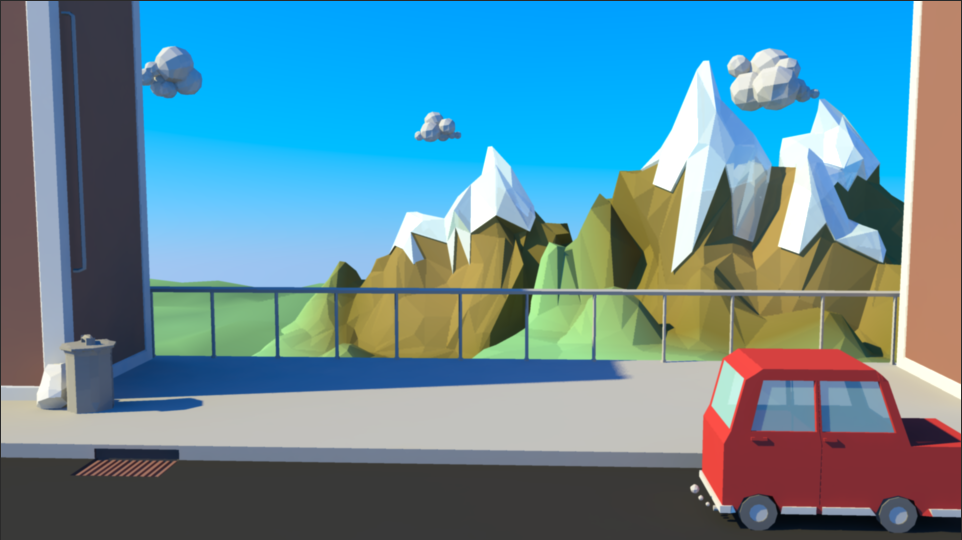Now just to give you guys a little history I am not a very technical person. At all. End of story. I don't like looking at the minute details of a project and often overlook small parts that snowball towards the end. My philosophy has been, "as long as it looks good" and even though I could point out every possible thing that is wrong with that way of thinking, it's still part of my belief. The reason why I'm saying this is because I wanted you to know where I'm coming from when writing this, and the struggles I went through trying to complete each project. In the end we had 2 main projects scenes, all of which took multiple days to complete and one of which counted as our final project.
Project 1
This was the first project that we had worked on. This scene was provided to us, with all the geometry in place, and we were tasked with matching the original lighting in the Reference photo. This was a good way to teach us the power of the lighting system in Maya, and how it can add to a scene without ever needing to texture anything. Oh yeah, did I mention that all the geometry has a Lambert texture on it? Because, yeah it does haha.
Project 2
Look at this picture.....look at it. Okay you got it in your head? Good haha This was the scene we were working on for the rest of the month. We had to break it down the project into a bunch of different parts. We learned about UV's, Texture Projections, Reflections, Refractions, and Compositing. I'll try to break it down to each piece, but I may not have all the files to show off.
UV's
Like I had mentioned, the first part of the project was to UV the Scrapper, and texture it in photoshop. This was the one that I did. I know it's a little hard to see the details with the UV layout over everything, but all the details are there. Trust me.
Texture Projection
After we got the Scrapper all worked out, we had to move on to the box and work a lot more in the Hypershade than I am, or was, comfortable with. There were so many nodes to work with, all intersecting each other in haphazard ways that made my head spin. The only other Node-based system I had worked with before was Nuke8, but even that was a much more intuitive to me than the Hypershade. Though I did get it all worked out in the end.
Reflections and Refractions
Next up was getting the bottle to actually LOOK like a bottle. We had to learn about how the MIA_material worked and how it reacted to the lights in the scene. Of course we used some of the other skills to spice up the bottle, and make it our own creation. I choose to replicate Slurm soda, from Futurama...as you'll see is sort of my "theme" for this project.
Scene Finishing
And here it is everyone. This is everything put together, and rendered out. Here you can see how my Scrapper, and Box ended up and see the theme that I had stuck with.
Compositing
After everything set and looking about the way that we wanted it, we learned about rendering out all our different passes, and bringing it into Nuke. Here we had to adjust our scene in order to fix the lighting. Nothing too special here, just basic Nuke.
Overall this class was a lot of fun, and the teacher Jared Edwards was very helpful in not only teaching us the materials we needed for the projects, but also for our own personal work. Even though I wont ever be a shading and lighting artist I liked everything that we learned.























